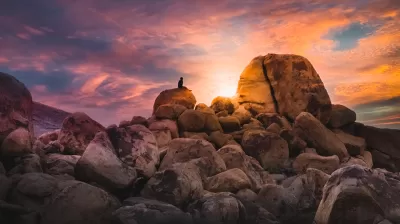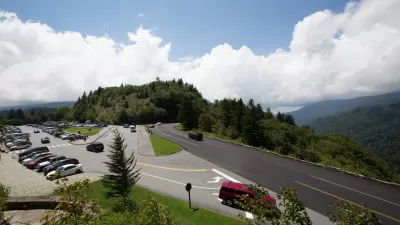To travel ethically, visitors to national parks need to be more mindful and better understand the history of the parks and their impacts on these spaces and surrounding communities.

The great outdoors have been incredibly popular with the public during these COVID times. Numerous studies and articles provide evidence of this, with examples including "Return of the National Parks," "National Forests Were Highly Popular in 2020," "Parks Overwhelmed by Record Numbers of Visitors," and "Avoiding Crowds at National Parks."
In this article, Amanda Machado discusses an aspect of outdoor travel that is often overlooked or neglected: how to travel in a socially and environmentally responsible way given that the national park system was built upon land stolen from Native Americans. As Machado explains, we really need to consider how "the way we take advantage of our national parks has often caused harm: the genocide of Indigenous communities to make 'space' for outdoor recreation, the unmanageable waste that accumulates from large crowds of tourists, the scarcity of resources for people living near parks."
The article offers four tips for travelers to think about before their next visit to a national park:
- Research how the pandemic has affected local communities surrounding national parks.
- Consider alternatives to popular tourist destinations.
- Seek out opportunities to acknowledge Indigenous communities.
- Explore ways to abandon the mindset of chasing after "pristine wilderness"
For details on each tip, please read the source article.
FULL STORY: Wanderlust and stolen land: how to mindfully explore the American outdoors

Rethinking Redlining
For decades we have blamed 100-year-old maps for the patterns of spatial racial inequity that persist in American cities today. An esteemed researcher says: we’ve got it all wrong.

Montreal Mall to Become 6,000 Housing Units
Place Versailles will be transformed into a mixed-use complex over the next 25 years.

Planetizen Federal Action Tracker
A weekly monitor of how Trump’s orders and actions are impacting planners and planning in America.

Santa Clara County Dedicates Over $28M to Affordable Housing
The county is funding over 600 new affordable housing units via revenue from a 2016 bond measure.

Why a Failed ‘Smart City’ Is Still Relevant
A Google-backed proposal to turn an underused section of Toronto waterfront into a tech hub holds relevant lessons about privacy and data.

When Sears Pioneered Modular Housing
Kit homes sold in catalogs like Sears and Montgomery Ward made homeownership affordable for midcentury Americans.
Urban Design for Planners 1: Software Tools
This six-course series explores essential urban design concepts using open source software and equips planners with the tools they need to participate fully in the urban design process.
Planning for Universal Design
Learn the tools for implementing Universal Design in planning regulations.
City of Camden Redevelopment Agency
City of Astoria
Transportation Research & Education Center (TREC) at Portland State University
Regional Transportation Commission of Southern Nevada
Toledo-Lucas County Plan Commissions





























